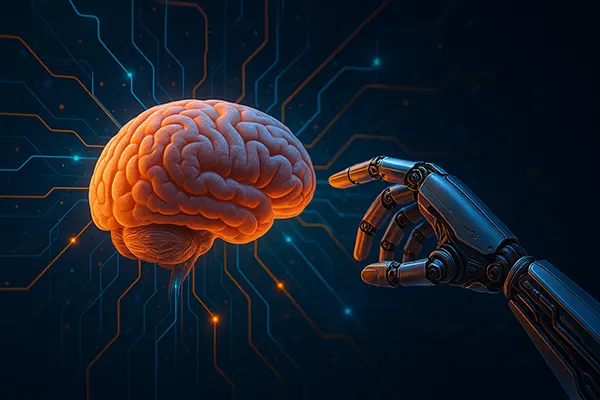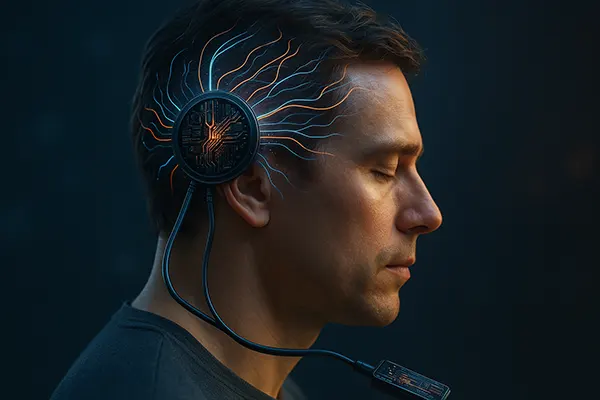
Next-Generation Neural Interfaces: Merging Consciousness with Machines
Neural interfaces are transforming from science fiction into scientific reality, redefining how we interact with technology. These systems, which enable direct communication between the human brain and external devices, are progressing rapidly in 2025. From assisting people with disabilities to paving the way for machine-enhanced cognition, neural interfaces mark a new era of integration between humans and machines.
Progress in Brain-Machine Interface Technology
The latest generation of neural interfaces in 2025 has shown unprecedented precision and responsiveness. Companies like Neuralink, Synchron, and BrainGate have moved beyond experimentation into early-stage clinical applications. These technologies now enable patients with spinal cord injuries to control robotic limbs or computer cursors using only thought, restoring a degree of autonomy once considered impossible.
Wireless brain implants are now significantly less invasive. Synchron’s Stentrode, for example, can be implanted via blood vessels, avoiding risky open-brain surgery. This innovation has drastically reduced barriers to accessibility, allowing broader clinical trials and the involvement of non-severe cases in cognitive enhancement research.
Real-time signal processing capabilities have also advanced. AI-powered decoding algorithms can now translate complex neural activity into digital commands with minimal lag, offering smoother interactions. These improvements are the foundation for broader applications, including gaming, communication, and cognitive therapy.
From Restoration to Enhancement
Initially developed to treat neurological disorders, neural interfaces have begun shifting towards enhancing healthy human capabilities. In 2025, cognitive augmentation is no longer theoretical—early adopters are already experimenting with memory support tools and real-time mental training via neurofeedback interfaces.
Startups like Kernel and Cognix have released non-invasive neural headsets that monitor and influence brain states. These devices are popular among professionals seeking to improve focus, meditation, or productivity, and their commercialisation points to growing interest in “neuro-optimisation.”
Moreover, ethical questions are emerging. The potential to enhance intelligence or memory raises concerns about social inequality, consent, and long-term safety. Experts advocate for strict regulation to ensure safe and ethical deployment of such enhancements.
Practical Applications and Commercial Integration
Beyond healthcare, neural interfaces are being tested in commercial sectors. In gaming, neuro-controlled devices are adding a new layer of immersion, enabling players to interact with digital environments using brain activity alone. This technology is still developing but shows immense potential for redefining user experiences.
In 2025, several tech companies have integrated neural input into wearable AR/VR devices. For instance, Meta’s neural wristbands combine electromyography with brainwave analysis to create seamless interfaces for virtual environments. This blend of physical and neural control is revolutionising digital interaction.
Education and communication are also undergoing change. Students with speech or motor impairments are using neural interfaces to participate in real-time classroom discussions. These systems can convert thought into text or speech, offering an entirely new level of accessibility.
Barriers to Mainstream Adoption
Despite technological strides, neural interfaces still face hurdles. High development costs, limited insurance coverage, and ethical resistance slow down widespread adoption. Invasive options require medical oversight, while non-invasive ones suffer from limited signal clarity and resolution.
Public acceptance is another challenge. Privacy fears related to brain data, potential misuse by corporations, and fears of manipulation hinder trust. Transparent policies and data ownership guarantees are vital for progress.
Technical standards are also lacking. Compatibility between neural systems and consumer tech remains inconsistent. Without universal protocols, integration across devices and platforms will remain fragmented.

Long-Term Implications and the Future of Human-Machine Symbiosis
The merging of consciousness with machines opens unprecedented possibilities. In the long term, neural interfaces could enable true brain-to-brain communication, redefining how humans interact. Projects aiming to map and synchronise cognitive patterns between individuals are underway, indicating a future of collaborative thought.
Neural recording at scale may even lead to “digital consciousness backups,” where human memories and personality traits are stored digitally. Although this is still highly speculative, major tech firms are investing in foundational technologies such as high-density neural mapping and quantum data storage.
Crucially, the psychological impact of neural-machine symbiosis must not be underestimated. As interfaces become embedded in daily life, questions about identity, autonomy, and the boundaries of the human experience will gain urgency.
Regulation and Ethical Governance
In 2025, several countries are working on regulatory frameworks for neural interface development. The European Union and Japan have drafted ethics-based guidelines ensuring user rights, medical oversight, and transparency in data use. These regulations aim to balance innovation with societal safety.
Global cooperation will be essential. Neural technology transcends borders, and harmonising standards is critical to prevent misuse or technological exploitation. International summits and research alliances are becoming more common to align ethical benchmarks.
Public dialogue is equally important. Informed communities, aware of both the benefits and risks of neural interfaces, can guide responsible adoption. Transparency, education, and public consultation will define how well society adapts to this neural revolution.



